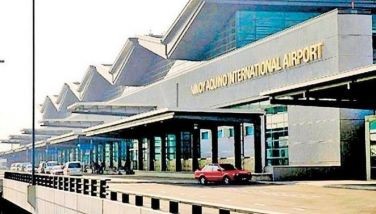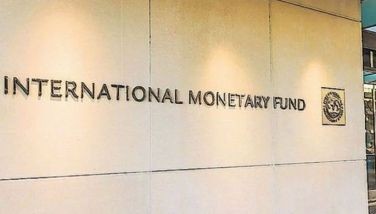We need LNG policy

A characteristic of a “soft state” is its inability to make timely decisions that are important for the country. Our government officials love to kick the can down the road, postponing decisions because competing vested interests are involved. Or maybe, they are waiting for the highest bidder to come forward.
I want to believe many of the technocrats in government want to do the right things. But they are not beyond being bullied by vested interests to delay making decisions on policy matters. The politics of running our government is the biggest cause of crisis situations that are totally preventable if addressed properly and on time.
That seems to be the case for the role of natural gas in our energy mix. Natgas and coal are the only two reliable energy sources for the baseload requirements of our power grid. Geothermal isn’t much. El Niño conditions are more severe and more frequent in recent experience, and that makes our storage dams useless for power generation during long periods of drought. Variable renewable energy, despite the claims of adherents, cannot yet replace natural gas and coal for baseload reliability.
Our energy policy makers knew that natgas would be needed, but they failed to make a clear national policy, especially on Malampaya. So now, private sector investors are at a loss.
Such a policy is essential. The current Malampaya production (half of its original capacity) supplies 20 percent of Luzon’s grid requirements, a significant impact on our power supply and cost.
And as Malampaya winds down production, we will increasingly depend on the international natgas spot market. But prices and supply availability depend on many geopolitical and weather uncertainties. A policy on securing long-term contracts would shield us from future problems, but that requires government involvement given the big risks involved.
Indeed, the power companies using natgas have been crying for official guidance for the longest time because our sole indigenous natgas supply, Malampaya, is running out. The government delayed approval of plans to put up facilities needed to use imported natgas and that restricted the options of power plants using Malampaya.
The government also dilly-dallied on extending the service contract that would have kept Shell running the field and conducting the drilling of additional wells to extend its life. It was almost as if the government was intentionally pissing off Shell and Chevron so they would relinquish control of Malampaya.
As it happened, Chevron opted out first and sold to a Duterte crony with no background in managing an offshore gas field. This was not the first time a presidential crony intruded in Malampaya. Some years ago, the results of an international bidding to develop the oil rim of Malampaya were nullified by then-President Gloria Macapagal Arroyo, who wanted it for an inexperienced crony. We ended up losing the oil rim production.
Shell, the consortium manager, sold out to a company of Ricky Razon, who was persuaded to be a white knight because the Duterte crony didn’t have enough capital resources to run Malampaya and finance the additional deepwater drilling to prolong its life.
Razon did what was expected of a serious investor in a major project by hiring a majority of the Shell team that was already running the project for years and was familiar with the characteristics of the field. These are the people running the offshore platform, onshore gas plant, supply base, and support teams at headquarters. Razon, with his international mindset, was not afraid to pay the kind of compensation packages normal for such operations.
Razon also committed to financing the drilling of two new production wells, Camago and Malampaya East, required to keep Malampaya delivering beyond 2025. These two wells are part of their life extension Project Sinagtala (which also includes major maintenance of the Malampaya platform in order to extend its life). It will extend Malampaya’s life by five to 10 years, depending on fuel demand. The whole project costs $800M, the bulk of which will be spent in 2025 to 2026.
The absence of clear policies caused the Malampaya consortium to take the unfortunate step of going to court because neither the DOE nor the ERC was ready to give them relief. The TRO issued by a Taguig court, which the same court subsequently rescinded, gave the impression that the Filipinos in the consortium made a mistake in calculating what they paid Shell and Chevron. In short, it looked like they overpaid and are now asking the court to force the government to give them priority over imported LNG and thus make the power consumers pay the difference.
The consortium also apparently convinced Sen. Pia Cayetano to propose a Philippine Natural Gas Industry Development Act (Senate Bill No. 2793) to cover all aspects of the natgas industry, including transportation, transmission and storage, among others. Sen. Cayetano said, “This bill provides for the prioritization of indigenous gas over other imported LNG (liquefied natural gas) and other conventional fuels in terms of use and the production of power.”
The first part of the bill, formulating a natgas industry policy, seems alright and even overdue. But the call for prioritization of indigenous LNG over imported LNG is problematic. That means power consumers can be penalized, the way we were penalized by the feed-in tariff imposed on us to support solar and other renewable energy. With such a policy, there will be no incentive for the local LNG producer, in this case, Malampaya, to produce efficiently and compete fair and square with imported LNG.
Donnabelle Kuizon Cruz, managing director of Prime Energy, Razon’s Malampaya company, told me that’s not what they had in mind. She explained that the price of Malampaya gas was equal to or even lower than international spot market prices for the longest time. Even now, Malampaya gas is slightly lower than the international market price.
More on the natgas issues on Monday.
Boo Chanco’s email address is [email protected]. Follow him on X @boochanco.
- Latest
- Trending





























